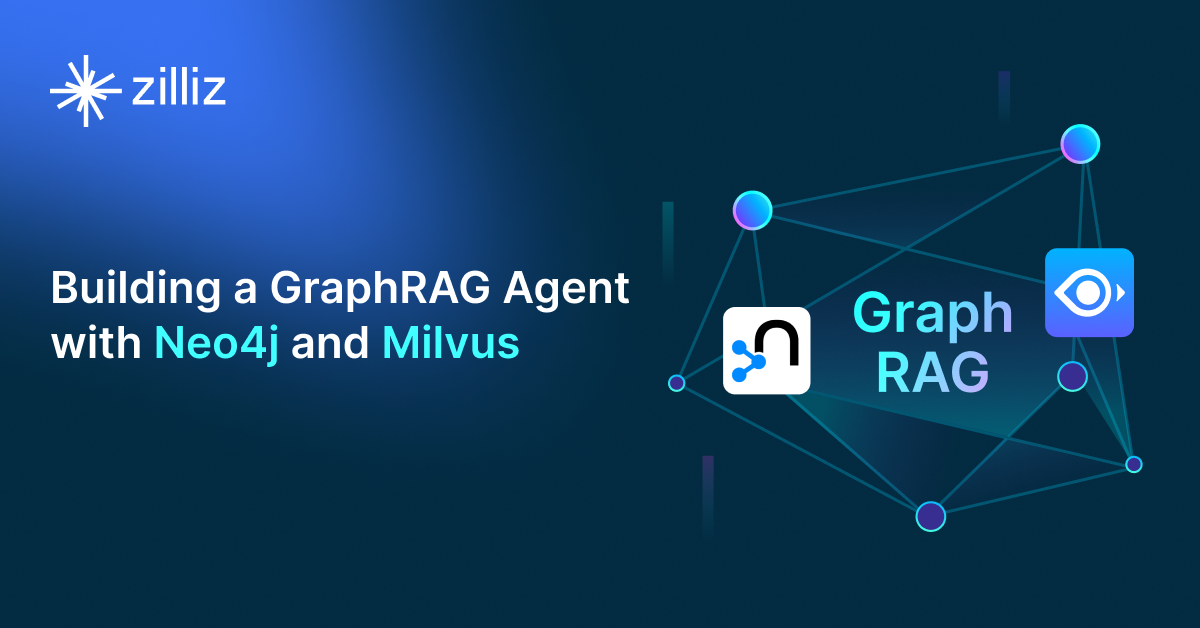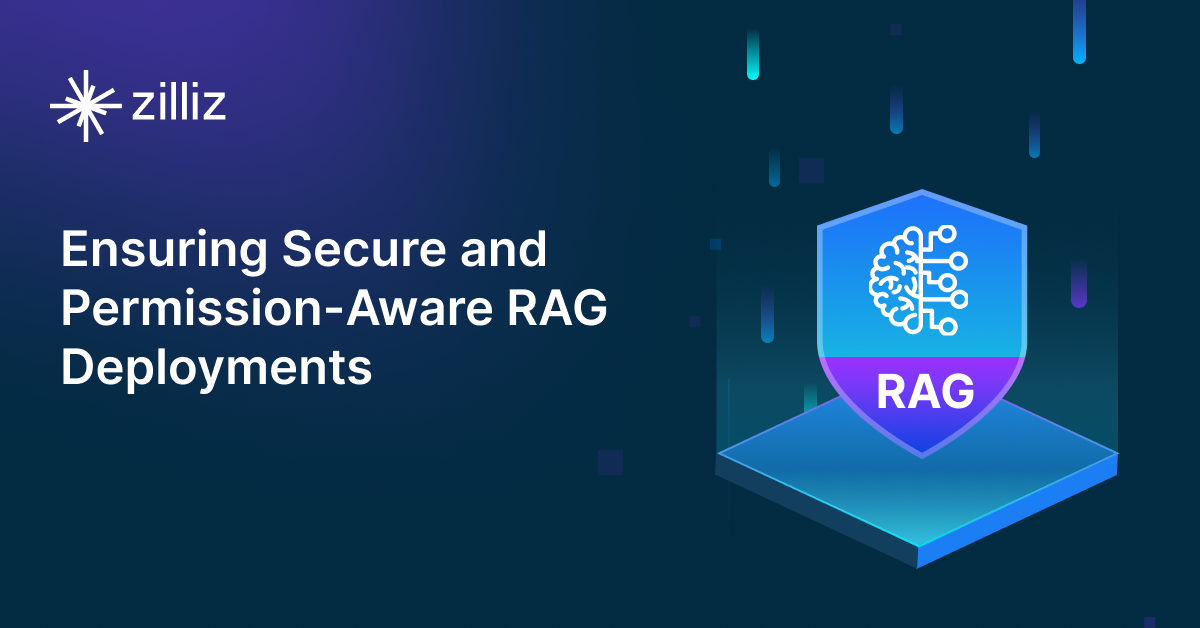Build RAG Chatbot with LangChain, Faiss, NVIDIA Qwen2.5-7B-Instruct, and OpenAI text-embedding-3-small
Introduction to RAG
Retrieval-Augmented Generation (RAG) is a game-changer for GenAI applications, especially in conversational AI. It combines the power of pre-trained large language models (LLMs) like OpenAI’s GPT with external knowledge sources stored in vector databases such as Milvus and Zilliz Cloud, allowing for more accurate, contextually relevant, and up-to-date response generation. A RAG pipeline usually consists of four basic components: a vector database, an embedding model, an LLM, and a framework.
Key Components We'll Use for This RAG Chatbot
This tutorial shows you how to build a simple RAG chatbot in Python using the following components:
- LangChain: An open-source framework that helps you orchestrate the interaction between LLMs, vector stores, embedding models, etc, making it easier to integrate a RAG pipeline.
- Faiss: also known as Facebook AI Similarity Search, is an open-source vector search library that allows developers to quickly search for semantically similar multimedia data within a massive dataset of unstructured data. (If you want a much more scalable solution or hate to manage your own infrastructure, we recommend using Zilliz Cloud, which is a fully managed vector database service built on the open-source Milvus and offers a free tier supporting up to 1 million vectors.)
- NVIDIA Qwen2.5-7B-Instruct: This advanced language model is designed for instruction-following tasks, leveraging the capabilities of 7 billion parameters to comprehend and generate diverse text responses. Its strengths lie in natural language understanding and contextual adaptability, making it ideal for applications in tutoring, conversational agents, and automated content generation across various domains.
- OpenAI text-embedding-3-small: This model specializes in generating high-quality text embeddings for various NLP tasks, offering a balance between performance and computational efficiency. Its strengths lie in semantic understanding and similarity comparisons, making it ideal for applications in search, recommendation systems, and clustering tasks where quick processing is essential.
By the end of this tutorial, you’ll have a functional chatbot capable of answering questions based on a custom knowledge base.
Note: Since we may use proprietary models in our tutorials, make sure you have the required API key beforehand.
Step 1: Install and Set Up LangChain
%pip install --quiet --upgrade langchain-text-splitters langchain-community langgraph
Step 2: Install and Set Up NVIDIA Qwen2.5-7B-Instruct
pip install -qU "langchain-nvidia-ai-endpoints"
import getpass
import os
if not os.environ.get("NVIDIA_API_KEY"):
os.environ["NVIDIA_API_KEY"] = getpass.getpass("Enter API key for NVIDIA: ")
from langchain.chat_models import init_chat_model
llm = init_chat_model("qwen/qwen2.5-7b-instruct", model_provider="nvidia")
Step 3: Install and Set Up OpenAI text-embedding-3-small
pip install -qU langchain-openai
import getpass
import os
if not os.environ.get("OPENAI_API_KEY"):
os.environ["OPENAI_API_KEY"] = getpass.getpass("Enter API key for OpenAI: ")
from langchain_openai import OpenAIEmbeddings
embeddings = OpenAIEmbeddings(model="text-embedding-3-small")
Step 4: Install and Set Up Faiss
pip install -qU langchain-community
from langchain_community.vectorstores import FAISS
vector_store = FAISS(embedding_function=embeddings)
Step 5: Build a RAG Chatbot
Now that you’ve set up all components, let’s start to build a simple chatbot. We’ll use the Milvus introduction doc as a private knowledge base. You can replace it with your own dataset to customize your RAG chatbot.
import bs4
from langchain import hub
from langchain_community.document_loaders import WebBaseLoader
from langchain_core.documents import Document
from langchain_text_splitters import RecursiveCharacterTextSplitter
from langgraph.graph import START, StateGraph
from typing_extensions import List, TypedDict
# Load and chunk contents of the blog
loader = WebBaseLoader(
web_paths=("https://milvus.io/docs/overview.md",),
bs_kwargs=dict(
parse_only=bs4.SoupStrainer(
class_=("doc-style doc-post-content")
)
),
)
docs = loader.load()
text_splitter = RecursiveCharacterTextSplitter(chunk_size=1000, chunk_overlap=200)
all_splits = text_splitter.split_documents(docs)
# Index chunks
_ = vector_store.add_documents(documents=all_splits)
# Define prompt for question-answering
prompt = hub.pull("rlm/rag-prompt")
# Define state for application
class State(TypedDict):
question: str
context: List[Document]
answer: str
# Define application steps
def retrieve(state: State):
retrieved_docs = vector_store.similarity_search(state["question"])
return {"context": retrieved_docs}
def generate(state: State):
docs_content = "\n\n".join(doc.page_content for doc in state["context"])
messages = prompt.invoke({"question": state["question"], "context": docs_content})
response = llm.invoke(messages)
return {"answer": response.content}
# Compile application and test
graph_builder = StateGraph(State).add_sequence([retrieve, generate])
graph_builder.add_edge(START, "retrieve")
graph = graph_builder.compile()
Test the Chatbot
Yeah! You've built your own chatbot. Let's ask the chatbot a question.
response = graph.invoke({"question": "What data types does Milvus support?"})
print(response["answer"])
Example Output
Milvus supports various data types including sparse vectors, binary vectors, JSON, and arrays. Additionally, it handles common numerical and character types, making it versatile for different data modeling needs. This allows users to manage unstructured or multi-modal data efficiently.
Optimization Tips
As you build your RAG system, optimization is key to ensuring peak performance and efficiency. While setting up the components is an essential first step, fine-tuning each one will help you create a solution that works even better and scales seamlessly. In this section, we’ll share some practical tips for optimizing all these components, giving you the edge to build smarter, faster, and more responsive RAG applications.
LangChain optimization tips
To optimize LangChain, focus on minimizing redundant operations in your workflow by structuring your chains and agents efficiently. Use caching to avoid repeated computations, speeding up your system, and experiment with modular design to ensure that components like models or databases can be easily swapped out. This will provide both flexibility and efficiency, allowing you to quickly scale your system without unnecessary delays or complications.
Faiss Optimization Tips
To enhance the performance of the Faiss library in a Retrieval-Augmented Generation (RAG) system, begin by selecting the appropriate index type based on your data volume and query speed requirements; for example, using an IVF (Inverted File) index can significantly speed up queries on large datasets by reducing the search space. Optimize your indexing process by using the nlist parameter to partition data into smaller clusters and set an appropriate number of probes (nprobe) during retrieval to balance between speed and accuracy. Ensure the vectors are properly normalized and consider using 16-bit or 8-bit quantization during indexing to reduce memory footprints for large datasets while maintaining reasonable retrieval accuracy. Additionally, consider leveraging GPU acceleration if available, as Faiss highly benefits from parallel processing, leading to faster nearest neighbor searches. Continuous fine-tuning and benchmarking with varying parameters and configurations can guide you in finding the most efficient setup specific to your data characteristics and retrieval requirements.
NVIDIA Qwen2.5-7B-Instruct Optimization Tips
To optimize the NVIDIA Qwen2.5-7B-Instruct model in a Retrieval-Augmented Generation (RAG) setup, consider implementing mixed precision training to reduce memory footprint and accelerate training times. Fine-tune the model on domain-specific data to enhance relevancy in generated responses while adjusting the retrieval component's cosine similarity threshold to balance precision and recall. Utilize an efficient caching mechanism to store frequently accessed data, ensuring low-latency responses. Experiment with varying the number of retrievals based on query complexity, and leverage batch processing during inference to maximize throughput. Finally, keep an eye on hardware utilization metrics to adjust configurations and achieve optimal performance.
OpenAI text-embedding-3-small optimization tips
OpenAI text-embedding-3-small offers a lightweight alternative with faster processing speeds, making it well-suited for real-time RAG applications. Improve retrieval performance by fine-tuning similarity thresholds to minimize false positives in ANN searches. Keep input text concise and remove redundant information before embedding to maximize embedding efficiency. Utilize caching for frequently queried text embeddings to reduce unnecessary recomputation. When scaling, distribute embedding generation across multiple workers to optimize throughput. Apply post-processing filters, such as cosine similarity cutoffs, to refine search results. Consider hybrid search (dense + keyword-based) for improved retrieval when dealing with varied query types.
By implementing these tips across your components, you'll be able to enhance the performance and functionality of your RAG system, ensuring it’s optimized for both speed and accuracy. Keep testing, iterating, and refining your setup to stay ahead in the ever-evolving world of AI development.
RAG Cost Calculator: A Free Tool to Calculate Your Cost in Seconds
Estimating the cost of a Retrieval-Augmented Generation (RAG) pipeline involves analyzing expenses across vector storage, compute resources, and API usage. Key cost drivers include vector database queries, embedding generation, and LLM inference.
RAG Cost Calculator is a free tool that quickly estimates the cost of building a RAG pipeline, including chunking, embedding, vector storage/search, and LLM generation. It also helps you identify cost-saving opportunities and achieve up to 10x cost reduction on vector databases with the serverless option.
 Calculate your RAG cost
Calculate your RAG cost
What Have You Learned?
By diving into this tutorial, you’ve unlocked the magic of building a powerful RAG system from scratch! You learned how LangChain acts as the glue that holds everything together, orchestrating the flow of data between your components. With its intuitive framework, you can seamlessly connect a vector database like FAISS—which handles lightning-fast similarity searches—to NVIDIA’s Qwen2.5-7B-Instruct, a cutting-edge LLM that generates human-like, context-aware responses. And let’s not forget OpenAI’s text-embedding-3-small, which transforms messy text into crisp numerical vectors, making it possible for FAISS to find relevant information in a snap. Together, these tools form a dynamic pipeline that retrieves, understands, and synthesizes information like a pro. Plus, you picked up optimization tricks like chunking strategies and model fine-tuning to boost efficiency and accuracy, and maybe even tested your setup with the free RAG cost calculator to keep your projects budget-friendly!
But this is just the beginning! You’ve seen firsthand how these pieces fit into a bigger picture—one where you can create AI applications that answer questions, summarize content, or even power chatbots with depth and precision. Now it’s your turn to experiment, tweak, and innovate. Try swapping models, adjusting parameters, or adding new data sources. The tools are in your hands, and the possibilities are endless. So go ahead—build something bold, optimize it fearlessly, and share what you create. The future of intelligent systems is waiting for you to shape it. Let’s get coding! 🚀
Further Resources
🌟 In addition to this RAG tutorial, unleash your full potential with these incredible resources to level up your RAG skills.
- How to Build a Multimodal RAG | Documentation
- How to Enhance the Performance of Your RAG Pipeline
- Graph RAG with Milvus | Documentation
- How to Evaluate RAG Applications - Zilliz Learn
- Generative AI Resource Hub | Zilliz
We'd Love to Hear What You Think!
We’d love to hear your thoughts! 🌟 Leave your questions or comments below or join our vibrant Milvus Discord community to share your experiences, ask questions, or connect with thousands of AI enthusiasts. Your journey matters to us!
If you like this tutorial, show your support by giving our Milvus GitHub repo a star ⭐—it means the world to us and inspires us to keep creating! 💖
- Introduction to RAG
- Key Components We'll Use for This RAG Chatbot
- Step 1: Install and Set Up LangChain
- Step 2: Install and Set Up NVIDIA Qwen2.5-7B-Instruct
- Step 3: Install and Set Up OpenAI text-embedding-3-small
- Step 4: Install and Set Up Faiss
- Step 5: Build a RAG Chatbot
- Optimization Tips
- RAG Cost Calculator: A Free Tool to Calculate Your Cost in Seconds
- What Have You Learned?
- Further Resources
- We'd Love to Hear What You Think!
Content
Vector Database at Scale
Zilliz Cloud is a fully-managed vector database built for scale, perfect for your RAG apps.
Try Zilliz Cloud for Free


